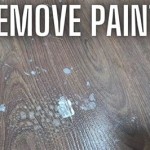Laying Vinyl Flooring on Rough Concrete: A Comprehensive Guide
Installing vinyl flooring on rough concrete may seem daunting, but with meticulous preparation and attention to detail, you can achieve a flawless and durable installation. This comprehensive guide will walk you through the essential aspects of laying vinyl flooring on rough concrete, ensuring a successful outcome.
Materials Required:
- Vinyl flooring
- Concrete patching compound
- Self-leveling concrete
- Primer
- Adhesive
- Notched trowel
- Utility knife
- Tape measure
- Straight edge
- Safety glasses and gloves
Step 1: Prepare the Concrete Surface
Begin by cleaning the concrete surface thoroughly, removing any dust, dirt, or debris that could interfere with adhesion. Use a wire brush or broom for this purpose. If there are any cracks or holes, fill them with concrete patching compound and let it dry completely.
Next, check the flatness of the concrete using a level. If the floor is uneven, you'll need to apply self-leveling concrete to create a smooth and level surface for the vinyl flooring.
Step 2: Prime the Concrete Surface
Once the concrete is prepared, apply a primer specifically designed for concrete. This will help promote adhesion between the concrete and the vinyl flooring.
Use a roller or brush to apply the primer evenly, ensuring that you cover the entire surface. Let the primer dry completely according to the manufacturer's instructions.
Step 3: Choose and Apply the Adhesive
Select an adhesive compatible with your vinyl flooring and the concrete substrate. Follow the manufacturer's instructions carefully when mixing and applying the adhesive.
Use a notched trowel to spread the adhesive evenly over the primed concrete surface. The notch size will depend on the adhesive and vinyl flooring you are using.
Step 4: Lay the Vinyl Flooring
Begin by placing the first vinyl plank or tile at the starting point, aligning it with the layout marks you have made.
Carefully lift the vinyl flooring and apply adhesive to the back according to the manufacturer's instructions. Align the flooring with the starting point and firmly press it into place.
Continue laying the vinyl flooring, row by row, pressing each plank or tile firmly into the adhesive. Use a rolling pin or hand roller to ensure good adhesion.
Step 5: Trim and Finish
Once the entire floor is laid, use a sharp utility knife to trim any excess vinyl flooring around the edges. Measure and cut the vinyl carefully for a neat fit.
Finally, install transition moldings or baseboards to cover the edges of the vinyl flooring and provide a finished look.
Additional Tips:
- Acclimate the vinyl flooring to the room temperature for at least 24 hours before installation.
- Wear safety glasses and gloves during installation to avoid accidents.
- Use a straight edge and a utility knife to cut the vinyl flooring straight and clean.
- Roll the vinyl flooring firmly after installation to ensure good adhesion.
- Allow the adhesive and vinyl flooring to cure according to the manufacturer's instructions before walking or placing furniture on the floor.
Conclusion:
Laying vinyl flooring on rough concrete requires careful preparation and precise installation techniques. By following the steps outlined in this guide and adhering to the instructions provided by the vinyl flooring manufacturer, you can achieve a professional-looking and durable floor covering that will enhance the beauty and functionality of your space.

How To Prepare A Concrete Floor For Vinyl Flooring Parrys

Vinyl Plank Flooring On Uneven Concrete

Concrete Subfloor Preparation For The Vinyl Floor Installation How To Diy Mryoucandoityourself

Easy Ways To Install Vinyl Plank Flooring On Concrete

How To Install Vinyl Or Laminate Floors In A Basement Over Concrete Slab

Guide To Lay Vinyl Flooring Over Floorboards

Easy Ways To Install Vinyl Plank Flooring On Concrete

Laying Vinyl Planks The Right Way Expert Guide By Fantastic Handyman

Wineo 800 Stone Xl Rough Concrete Buy Glue Down Vinyl Flooring

Easy Ways To Install Vinyl Plank Flooring On Concrete
See Also







